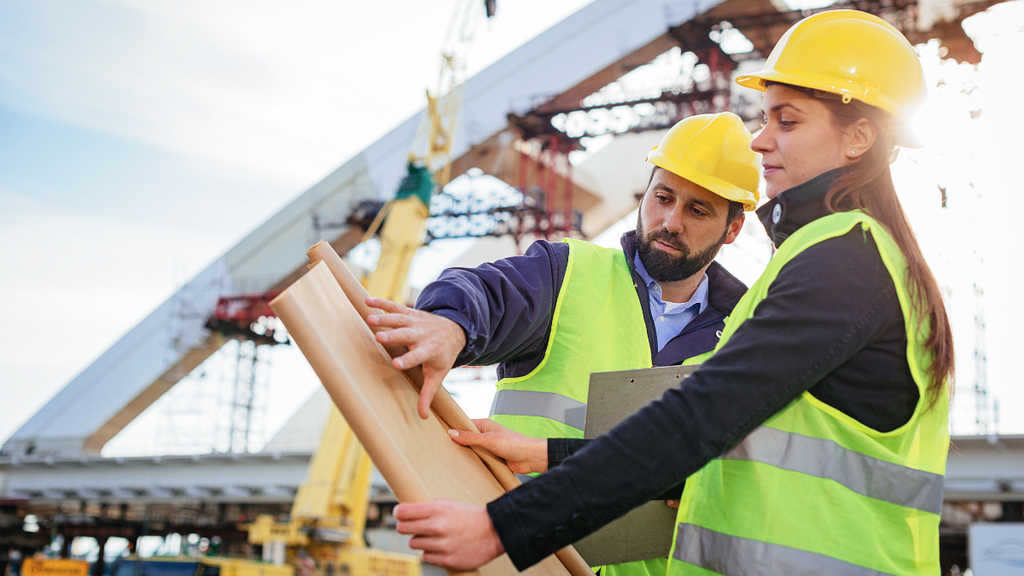The Ultimate Guide To Geotheta
The Ultimate Guide To Geotheta
Blog Article
Geotheta Can Be Fun For Everyone
Table of ContentsThe Only Guide for GeothetaThe 30-Second Trick For GeothetaGeotheta - Truths3 Easy Facts About Geotheta ExplainedIndicators on Geotheta You Need To Know

They carry out website investigations, gather examples, do lab examinations, and examine information to assess the viability of the ground for building and construction tasks - Geotechnical Engineers. Based upon their searchings for, geotechnical engineers provide recommendations for structure layout, incline stability, maintaining structures, and mitigation of geotechnical dangers. They team up with various other experts, such as designers, architectural designers, and building teams, to make sure that geotechnical factors to consider are integrated into the total task layout and execution
By analyzing the behavior and properties of soil and rock, they can determine potential geotechnical hazards such as landslides, soil settlement, or slope instability. Their experience helps prevent failures or accidents that could endanger lives and property. Right here are some in-depth duties and responsibilities of a geotechnical designer: Site Examination: Geotechnical designers conduct site investigations to gather information on subsurface conditions.
They interpret the data to understand the residential or commercial properties and behavior of the dirt and rock, including their stamina, leaks in the structure, compaction features, and groundwater conditions. Geotechnical Analysis and Design: Geotechnical engineers assess the data accumulated during site investigations to evaluate the stability and suitability of the site for building tasks. They perform geotechnical computations and modeling to evaluate factors such as birthing ability, settlement, slope security, side earth stress, and groundwater circulation.
The 8-Minute Rule for Geotheta
Foundation Design: Geotechnical designers play a critical function in developing structures that can safely sustain the desired structure. They evaluate the dirt problems and lots requirements to determine the ideal foundation kind, such as shallow foundations (e.g., grounds), deep foundations (e.g (https://www.gaiaonline.com/profiles/geotheta/46779300/)., stacks), or specialized strategies like dirt renovation. They take into consideration factors such as negotiation restrictions, birthing capacity, and soil-structure interaction to develop optimum foundation styles
They examine construction plans, screen website tasks, and carry out field evaluations to validate that the style recommendations are complied with. If unexpected geotechnical concerns develop, they analyze the circumstance and provide suggestions for removal or changes to the layout. Danger Assessment and Mitigation: Geotechnical designers assess geotechnical risks and threats connected with the job site, such as landslides, liquefaction, or dirt disintegration.

Collaboration and Interaction: Geotechnical engineers work carefully with other specialists associated with a task, such as designers, architectural engineers, and building and construction groups. Reliable communication and partnership are vital to incorporate geotechnical factors to consider right into the total project design and building and construction process. Geotechnical designers provide technological proficiency, solution queries, and ensure that geotechnical needs are fulfilled.
10 Simple Techniques For Geotheta
Right here are some kinds of geotechnical engineers: Foundation Designer: Structure designers concentrate on developing and evaluating foundations for structures. They analyze the dirt problems, tons needs, and site features to determine the most proper structure type and style, such as shallow foundations, deep foundations, or specialized techniques like stack structures.
They examine the variables influencing slope stability, such as soil homes, groundwater conditions, and incline geometry, and develop approaches to avoid incline failings and minimize risks. Earthquake Engineer: Earthquake designers concentrate on evaluating and developing structures to stand up to seismic pressures. They assess the seismic danger of a site, review dirt liquefaction possibility, and create seismic layout standards to make sure the safety and security and durability of structures during earthquakes.
They carry out area screening, accumulate examples, and assess the accumulated data to define the soil residential or commercial properties, geologic formations, and groundwater problems at a site. Geotechnical Instrumentation Engineer: Geotechnical instrumentation designers focus on tracking and measuring the behavior of dirt, rock, and frameworks. They mount and preserve instrumentation systems that keep track of aspects such as soil negotiation, groundwater degrees, incline movements, and structural variations to assess efficiency and offer very early cautions of potential concerns.
Not known Incorrect Statements About Geotheta
They conduct examinations such as triaxial tests, consolidation examinations, direct shear examinations, and permeability try this website examinations to collect data for geotechnical evaluation and style. Geosynthetics Designer: Geosynthetics engineers specialize in the style and application of geosynthetic materials, such as geotextiles, geogrids, and geomembranes. They use these products to enhance soil stability, strengthen slopes, provide drain remedies, and control erosion.
They have a tendency to be investigative individuals, which suggests they're intellectual, reflective, and curious. They are curious, methodical, reasonable, logical, and sensible. Some of them are additionally social, indicating they're kind, charitable, cooperative, client, caring, practical, understanding, sensible, and pleasant - Consulting Engineer.
In the workplace setting, geotechnical engineers use specialized software application devices to do estimations, create layouts, and assess information. They prepare records, testimonial job specs, interact with clients and employee, and coordinate project activities. The workplace setup gives a favorable atmosphere for research study, evaluation, and cooperation with various other professionals associated with the task.
Some Known Details About Geotheta
They frequently see project websites to perform site examinations, assess geotechnical problems, and gather data for analysis. These gos to entail traveling to various places, sometimes in remote or tough surfaces. Geotechnical engineers might perform dirt tasting, conduct examinations, and display construction activities to guarantee that the geotechnical facets of the job are being implemented properly.
Geotechnical designers also work in specialized geotechnical laboratories. In these facilities, they perform experiments, do examinations on soil and rock samples, and evaluate the design properties of the products. Geotechnical laboratory designers function thoroughly in these atmospheres, handling testing tools, running tools, and recording data. They team up with various other research laboratory staff to make certain accurate and dependable testing outcomes.
Report this page